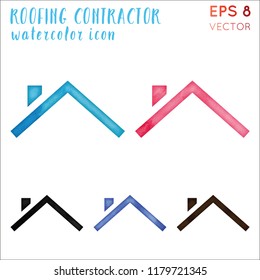Comprehending Exactly How Paint Choices Influence Your Emotions: The Psychology Behind Shade Selections
Comprehending Exactly How Paint Choices Influence Your Emotions: The Psychology Behind Shade Selections
Blog Article
Write-Up Composed By-Haugaard Key
When it pertains to selecting paint shades for a space, the options made expand beyond plain aesthetic appeals. The psychology of color delves into just how different colors can influence our emotions and psychological health, shaping the atmosphere of an area in extensive ways. Recognizing the effect of shade on mood can result in deliberate and calculated layout decisions that deal with enhancing different elements of our every day lives. By exploring the elaborate connection between color and psychology, one can discover the subtle yet effective ways in which repaint choices impact our psychological experiences within an offered environment.
The Impact of Shade on Feelings
Often, the colors we surround ourselves with can considerably affect our emotional state and general well-being. professional concrete painters of shade on feelings is a well-researched area within psychology and interior decoration.
residential painting jobs like red, orange, and yellow are recognized to evoke sensations of power, warmth, and comfort. These hues can promote discussion and create a relaxing atmosphere in a room.
In contrast, trendy shades such as blue, eco-friendly, and purple have a tendency to have a calming impact, promoting leisure and peace. These shades are usually liked in rooms and offices to produce a feeling of calmness.
Furthermore, the strength and saturation of shades play a critical function in identifying their psychological effect. Brilliant, dynamic colors can elicit sensations of excitement and interest, while soft tones are a lot more soothing and mild.
It is essential to think about the wanted emotional response when selecting paint colors for various rooms in your home or work space. By recognizing the psychology of shade, you can produce atmospheres that support your psychological well-being and enhance your general mood.
Picking the Right Paint Colors
Understanding the psychology of shade and its influence on emotions can lead people in choosing the best paint colors for their space. When picking paint shades, it's vital to think about the state of mind you intend to create in each space.
For https://small-job-painters-near-m98753.blogdiloz.com/32909981/create-a-stunning-home-ambience-the-transformative-power-of-residence-painting , relaxing colors like blue and green are optimal for bed rooms and leisure locations, as they promote a sense of harmony. On the other hand, vibrant tones like yellow or red can invigorate and boost conversation in social rooms such as living areas or dining locations.
Along with the emotional impact, the size and lights of a room should additionally influence shade choices. Lighter shades can make a little area really feel even more spacious, while darker tones can include heat and coziness to bigger locations. Natural light boosts the method colors show up, so it's important to check paint samples in different illumination problems prior to making a decision.
Inevitably, selecting the best paint shades entails a thoughtful factor to consider of both emotional reactions and useful aspects to develop a harmonious and comfortable living setting.
Developing the Preferred Atmosphere
Attaining the wanted environment in a space includes a critical combination of color choices and illumination considerations. Color plays an essential role in setting the mood of an area. Warm tones like reds, oranges, and yellows can create a comfortable and inviting ambience, ideal for spaces where comfort is key, such as living areas or rooms.
On the other hand, trendy colors like blues and environment-friendlies evoke a feeling of tranquility and leisure, making them excellent for areas where tranquility is preferred, like bathrooms or meditation spaces.
Along with color, illumination is an additional necessary factor in shaping the setting of an area. Soft, warm lights can enhance the warmth of a room, while intense, great lights can energize and boost the state of mind. Dimmer buttons or adjustable illumination fixtures offer flexibility, permitting you to adjust the lighting to suit various activities or moods throughout the day.
Final thought
In conclusion, the psychology of color shows the significant influence paint options can carry our mood and emotions within an area.
By recognizing just how various colors evoke certain sensations and picking paint shades accordingly, we can develop environments that advertise power, convenience, relaxation, or exhilaration.
Very carefully choosing the best colors can help us to influence our emotion and total wellness in a given space.
